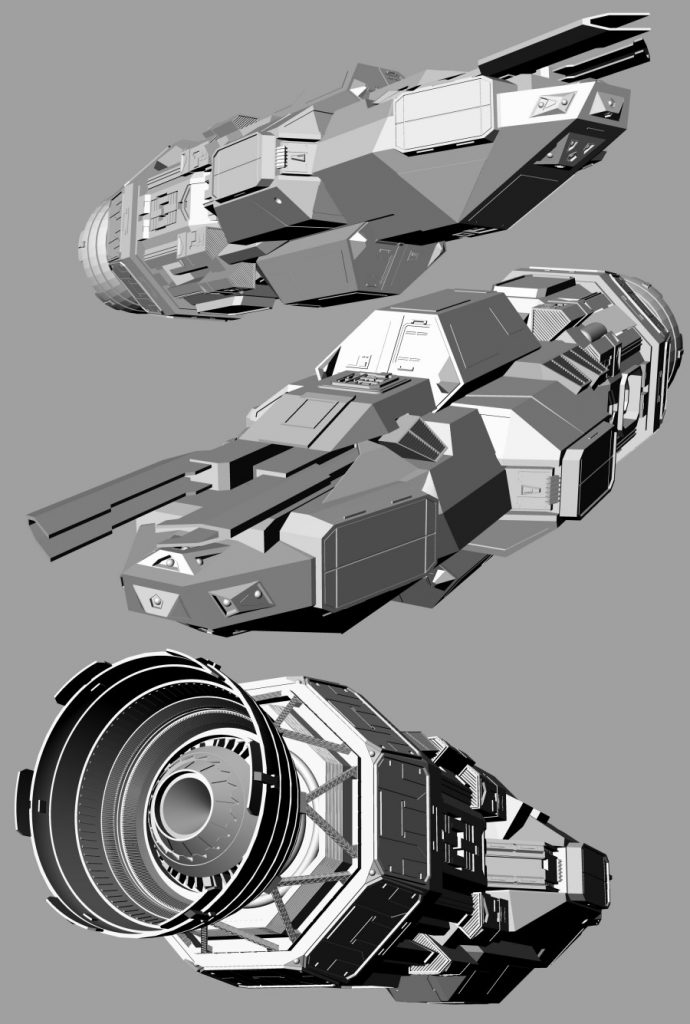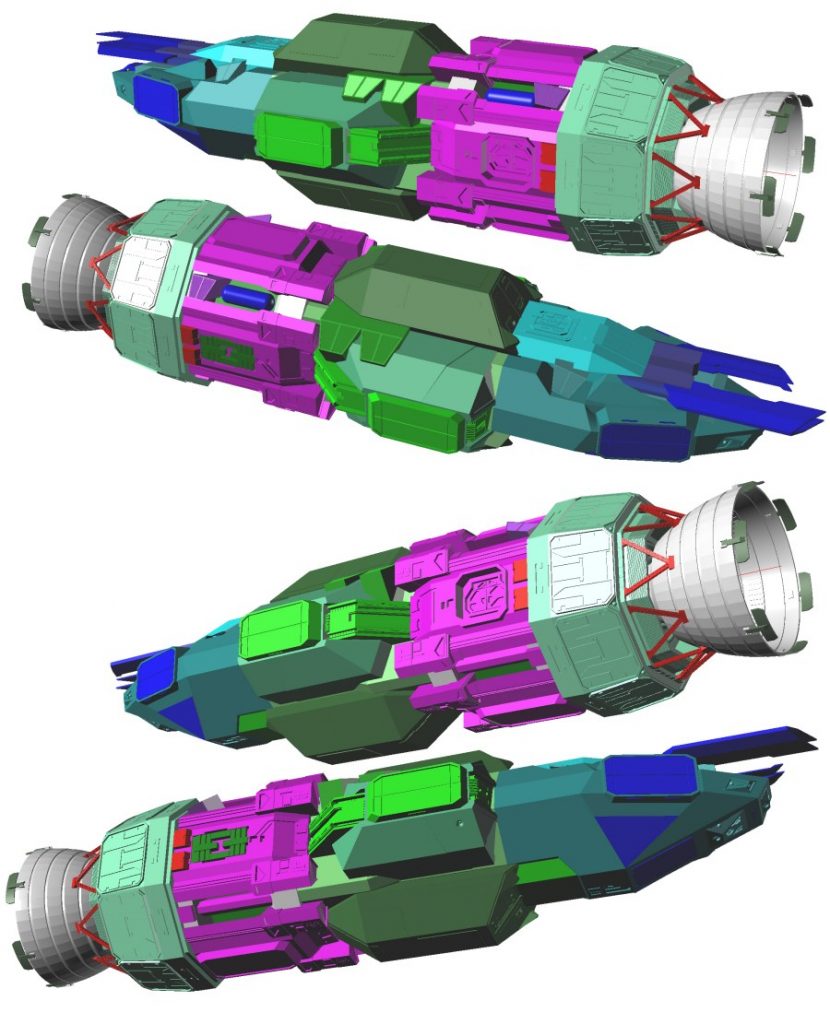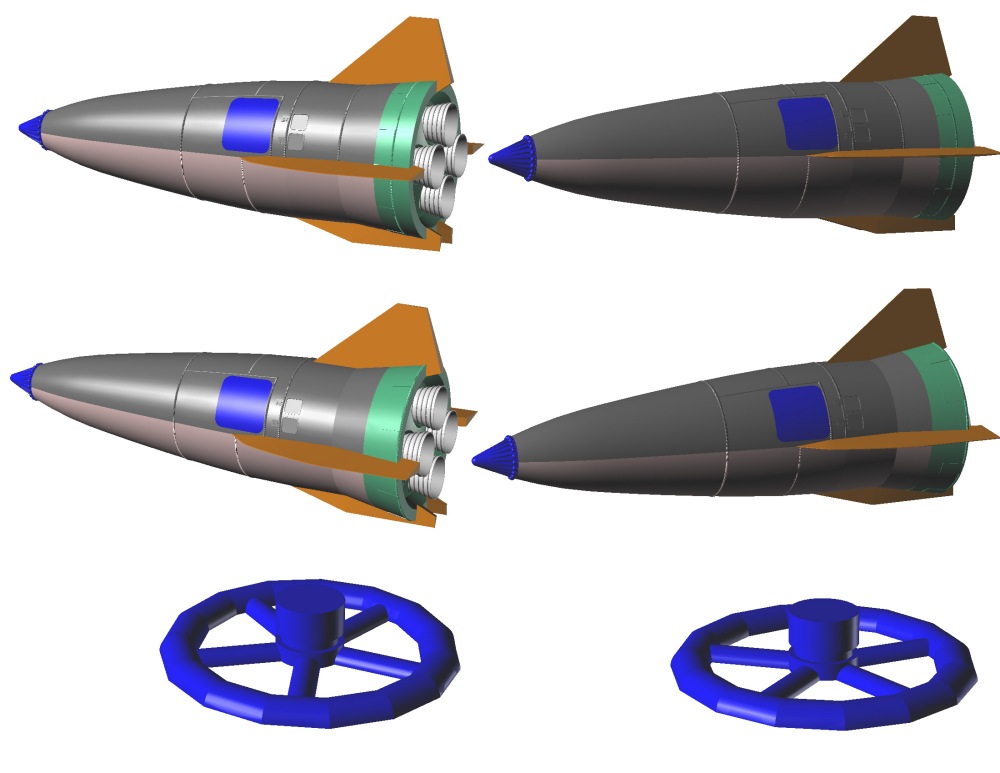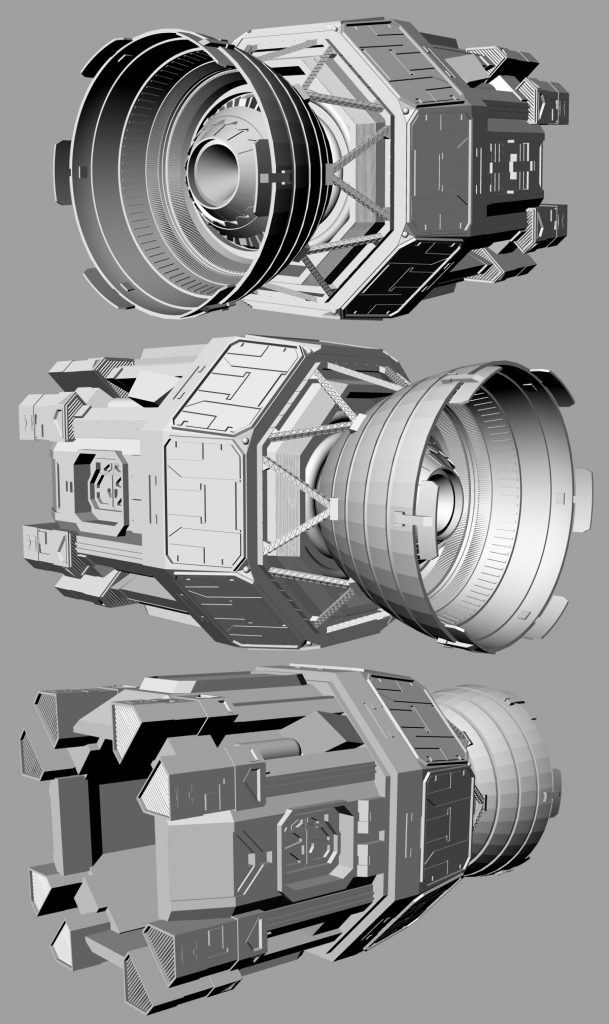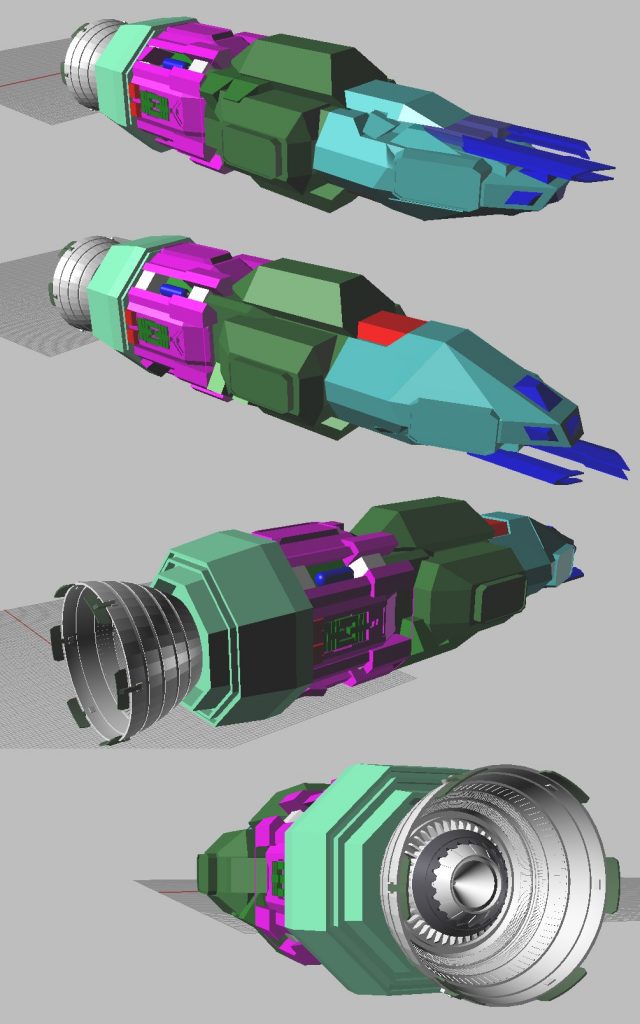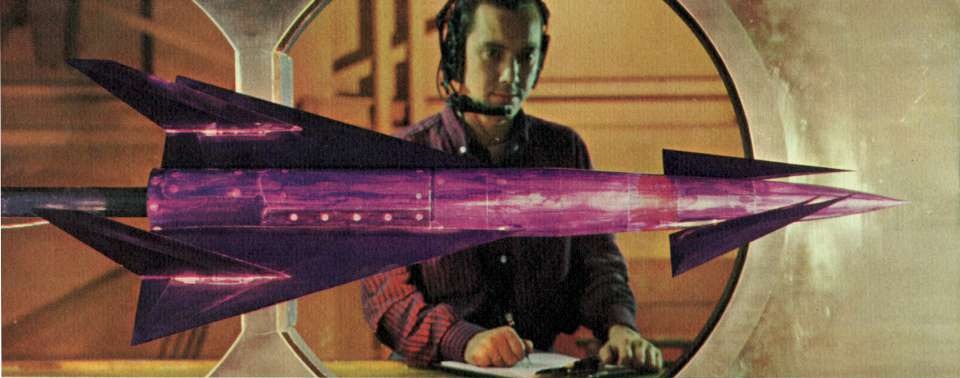Getting close-ish…
Well, here it is. There’s still a bit of time yet before it needs to be shipped off to be 3D printed, so if you see something that you think needs to be added or changed, let me know. Not shown here is the airlock door (fits flush). Also not shown is a yet-to-be-sculpted *probable* astronaut doing a spacewalk. A metal rod would connect the spaceship to the base.
This model is to be made available through Fantastic Plastic and will be 1/48 scale, a bit over 9″ long.
UPDATE: turns out there’s a book about “Men Into Space.” Anybody know if it’s any good? Specifically… good imagery, diagrams, etc.?
I have someone who wants me to make some CAD models for large-scale replicas, but I haven’t the necessary reference materials. Can anyone help?
1: Planck space telescope
2: ESA Exomars rover
3: Spaceship Two
Any assistance, pointers, data packages, whatever, would be greatly appreciated. Thanks.
Progress…
Probably wisely, the fusion “Epstein Drive” used by ships in the universe of “The Expanse” are not described much at all. Since the mechanics of the drive systems are not germain to the plot, it’s best to leave them as undescribed as the mechanics of the internal combustion engine in a story about someone driving a taxi cab. Still, hints are dropped here and there, including that they use “fuel pellets.” This would tend to indicate that it’s a form of nuclear pulse propulsion, but one with not only an insanely high pulse rate, but also extreme thrust *and* extreme Isp. The result of that should be an extreme amount of waste heat that would need to be radiated, but clearly the ships of The Expanse don’t have giant radiators. There are theoretical ways to explain that away, but from what I’ve read so far it hasn’t been touched on. I know how I explain the lack of radiators on the fusion powered ships in *my* fiction…
UPDATE: In “Cibola Burn,” Alex the pilot gives a very, very brief description of the engine. It uses lasers to crush the fuel pellets and magnetic fields to direct the resulting exhaust. So it *is* clearly a nuclear pulse system, of the inertial confinement micropellet variety.
From back when General Motors was studying spacecraft, here’s an early 1960’s video showing tests of three means of surface propulsion for lunar vehicles:
The Archimedes Screw system was interesting, but it seems to me that there’s virtually no chance that it would be a good idea on the moon. The rough, razor-sharp regolith would seem likely to sandblast those shiny metal screws in little short of no time.
A 1952 film describing the turboprop tailsitter. The film apparently had no audio, so a wholly unnecessary bit of “film projector noise” was added.
The film shows some interesting stuff, such as animations of the craft in action, and artists impressions of what must have been early alternate designs including a ducted-fan design and one with an odd delta wing with a cutout for the props.
Gotta love good hand craftsmanship:
The Death Star, along with the Star Destroyer, is one of those wholly 9mpractical, un-scientific Sci Fi designs that I’ve always wanted to make a *large* scale model of and/or make big ol’ blueprints of. Sigh…
A photo of a NASA wind tunnel model of a hypersonic aircraft configuration. The circa 1960 NASA brochure (promoting the organization to college students) that included this provided no further information, but I’m reasonably sure I’ve seen the wind tunnel test report on this, calling it a reusable booster or reusable launch vehicle. If that’s the case, the upper stages and payload were *probably* going to be carried on the things back.
